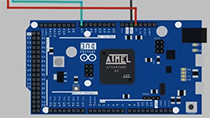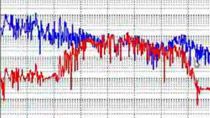5G signals: OFDM waveforms, Frame Structure, and Numerology
From the series: 5G Tutorial
Learn the basics behind 5G NR waveforms, frame structure, and numerology. This video looks at OFDM waveforms, and the different subcarrier spacings supported in 5G NR. You’ll also learn about the impact of different subcarrier spacings on slots and subframes. This video then walks you through the concept of carriers and bandwidth parts, and it explains how adaptive bandwidth parts help reduce power consumption. You will also learn about resource blocks and why the zero subcarrier is modulated in 5G NR.
Published: 23 May 2019
This is a new episode of our series "5G Explained." In this video, we discuss the basics of 5G NR waveforms, frame structure, and numerology. We will look at the OFDM waveforms, this really important characteristic of 5G NR, to accommodate different subcarrier spacings and its impact on slots and subframes. We will then explore the concept of carriers and bandwidth part and see how resource blocks in 5G NR differ from LTE.
5G NR defines the waveform to be OFDM with cyclic prefix. It also decreases the guard band for the waveform, which means that 5G waveforms are not limited to 90% of the bandwidth as they are in LTE. As in LTE, the standard does not specify any particular technique to limit the bandwidth and spectral leakage. Several well-known techniques, such as filtered OFDM or windowed OFDM, have received a lot of attention. And you can try them out easily with an example that ships with MathWorks communications systems toolbox.
Key to many 5G features is the fact that the subcarrier spacing in 5G NR can take not just one value, 15 kilohertz in LTE, but powers of 2 multiples of 15 kilohertz up to 240 kilohertz as shown on the first line. As a consequence, as the OFDM symbol duration is the reciprocal of the subcarrier spacing, the symbol duration shrinks by a factor of 2, 4, 8, or 16 for the highest subcarrier spacing.
At the same time, the same number of subcarriers when spaced further apart occupies a larger bandwidth. This is what can be seen on the third line. The maximum supported bandwidth is 50 megahertz at 15 kilohertz spacing, and it doubles each time to reach 100, 200, and 400 megahertz at 120 kilohertz spacing. For the highest subcarrier spacing of 240 kilohertz, the number of supported subcarriers is halved, which means that the bandwidth is still 400 megahertz.
So what are the advantages of having different subcarrier spacings? For one, a higher subcarrier spacing increases the bandwidth, as we just discussed. At the same time, it shortens the transmission time for one OFDM symbol, therefore enabling shorter latencies at the physical layer.
5G NR retains the concept of 10 millisecond frame divided into 10 one-millisecond subframes. There is also a concept of slot, but its definition is different from a slot in LTE. One slot is defined as 14 OFDM symbols, which corresponds to once a frame or one millisecond in LTE. Because of variable subcarrier spacing, the number of slots per subframe is also variable.
As the subcarrier spacing doubles, the slot length is halved because the OFDM symbol length is halved. For that reason, the number of slots per subframe doubles. This is shown in the last column of this table. Also, the picture at the bottom of the slide illustrates the shortening of its slot length as the subcarrier spacing increases.
So far, I have ignored the fact that there is an interdependency between some parameters. Here, I want to introduce the dependency on the carrier frequency. Frequency range 1, or FR1, is for carrier frequencies below 6 gigahertz. In that range, only subcarrier spacings of 15, 30, or 60 kilohertz are available. For FR2, which corresponds to millimeter wave frequencies, data transmission can only use 60 or 120 kilohertz subcarrier spacing. Finally, note that 240 kilowatt spacing is reserved for non-data channels, namely the synchronization signal block, which is described in another episode of this series, "5G Explained."
Getting a little deeper into the detail of the slot structure, 5G uses the same idea as LTE, where the cyclic prefix for the first OFDM symbol of a slot is longer than the cyclic prefix of the next six. This begs the question of how symbols align when there is a mix of subcarrier spacings within the same bandwidth. Let's just state here that 5G NR defines the cyclic prefix length for all subcarrier spacings in such a way that OFDM symbols align regularly, irrespective of the subcarrier spacing, as illustrated on this picture.
It is now helpful to introduce two notions, carriers and bandwidth parts. For each numerology, one carrier is defined. A carrier is characterized by a subcarrier spacing, a number of resource blocks, and a starting resource. To each carrier corresponds an OFDM resource grid.
We can see here two examples of how to define carriers in MathWorks 5G toolbox, one with 15 kilohertz subcarrier spacing and 216 resource blocks, and one with 30 kilohertz subcarrier spacing in 106 resource blocks. The larger subcarrier spacing means that 106 resource blocks cover almost the same bandwidth as 216 resource blocks at 15 kilohertz.
Now let us look at bandwidth parts.One bandwidth part is also characterized by a subcarrier spacing, a number of resource blocks, and a starting resource. The bandwidth part is associated with the carrier that has the same subcarrier spacing. But there generally are several bandwidth parts with the same carrier spacing. Bandwidth parts can be seen as a way to address the spectrum available to a UE.
Bandwidth parts address the following issues:- Some devices may not be able to receive the full bandwidth. Remember that the bandwidth can be as large as 400 megahertz. Also, even when a device is capable of receiving a larger bandwidth, it will save power if it can be addressed with a smaller bandwidth, for example, because it doesn't need a high data rate at that point in time. Here also, you can see how you can easily configure a bandwidth part in MathWorks 5G Toolbox by defining the subcarrier spacing, bandwidth, and location of each bandwidth part.
One UE can be associated with up to four bandwidth parts. But one UE can only have a single bandwidth part active at a time. Those bandwidth parts are pre-configured, and the UE can be instructed to switch between those different bandwidth parts over time. On this diagram, one can see the UE switching between bandwidth part 1 to 2, back to 1, and then to bandwidth part 3, which covers a larger bandwidth--likely when more data has to be exchanged with the genode B.
The definition of a resource element in 5G NR is the same as for LTE. It is the smallest time-by-frequency unit, which is one subcarrier and one OFDM symbol. On the other hand, a resource block is defined as a group of 12 subcarriers with no associated time duration. You may remember that in LTE, a resource block was defined as 12 subcarriers by 7 OFDM symbols.
Finally, note that the DC subcarrier is modulated in 5G NR, whereas it was kept unmodulated in LTE. The reason for the difference is that in 5G NR, bandwidth parts and therefore transmissions need not be centered in the carrier bandwidth. Consequently, the zero subcarrier doesn't play any specific role in the 5G NR OFDM grid.
This concludes this episode of the "5G Explained" video series on 5G NR waveforms, frame structure, and numerology.




